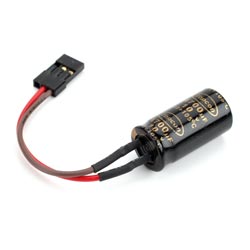In this section our aim is to share trully viable information geared towards getting your F1 setup to work for you. Newton's 3rd Law. For every action there is an equal and opposite reaction F1 cars are a little different than most others. Scale looking vehicles that offer performance on par with high end pan cars are fairly rare. Formula One r/c cars are making a grassroots comeback recently, so in this part of the site, we're going to try to offer some insight on how to make your car work it's best. A large part of the information is not anything new, especially if you're familiar with pan cars, but it's worth exploring all the adjustments at your disposal.
How To: Keep Your Tekin B1 Happy and Healthy
General Tuning of Formula One Cars F1 cars are kinda like a giant 1/12 or a WGT car in certain ways, but they have their own idiosyncrasies. There is a lot less downforce as compared to a full bodied car, since the ground effects don't scale down. This is great because a totally scale looking car can be as fast as a single color paint job on a generic body, but you're not as "stuck" as other types of cars. The front suspension can also present a challenge depending on the car due to the fact that a scale front end has certain limitations. Once you have the correct tires on the car, you can move onto the other aspects of the car. One of the most overlooked aspects to my mind is the dampening of the front end. Using some sort of fluid on the kingpins is the most common way to control the springs. The idea is not to lubricate the kingpin, but rather to slow the action of the suspension. 1/8 diff fluids are a good choice as they have a weight rating that at least gives you a general idea of the amount of dampening. There are other lines of lubes, but many don't give a viscosity rating, which can be bad if you are looking for more or finer choices. Repeatability is also key, and the 1/8 oils help here as well. Starting at about 15 to 20,000 weight oil on the front end, you can test to see what you would like for feel and front grip. Apply the fluid to the kingpins, where they move through the suspension arms. Adding a dab to the area where the spring fits will also help. On high traction, you can go to 60,000 wt or even higher.
At the rear, many cars use a damper disk type setup. There is a huge variety of things used on the disks. Many drivers like a few drops of diff lube, which can be varied by amount to change the dampening. Once again, the 1/8 diff oil type of lube can be used here. 10,000 wt is a good place to start. You must try to strike a balance between too hard and too soft, as going too had can make the car want to traction roll in high traction situations, but too soft can let the car roll too hard and snap the rear end loose.
Shock/Spring Shock angle is also a key adjustment, as flattening the shock will provide more on power steering. The shock's length also come into play, as on bumpy tracks you may need a longer shock to allow the rear end to move into the dips. At the same time, a longer shock (more droop) will allow more weight to transfer to the front on braking and give the car more steering. The shock spring not only determines the rear end's compliance to the track, but as the spring is stiffened, adds heightened reaction.
As far as the front end, the two most common setups are the sliding kingpin (F103) and the moving upper arm (F104, F103 link, HPI, 3Racing). The sliding kingpin is pretty easy to deal with, since there is not a lot to it. Mostly it's spring selection and lube choice. With the "link" or moving upper arm, minimum amounts of camber are probably best, zero or 1/2 degree for foam. The long length of the upper link provides a lot of bite at the front. With rubber, you can get more aggressive with the camber, and use it to help set the total amount of steering and the amount of reaction off center. If caster can be changed, 4-6 degrees is a good place to start. You should be able to feel every change to caster, since even 1 degree is a noticeable change. Rich Chang's 1/12 Cheat Sheet is also a valuable resource for pan car style r/c vehicles. Print it out for a quick breakdown. |

